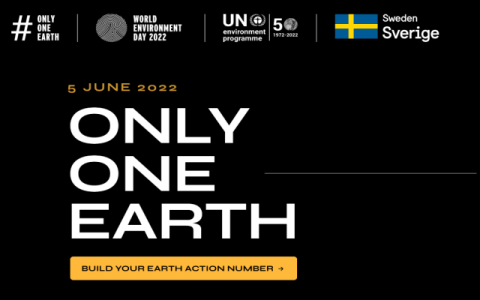
5 June is World Environment Day, a very important occasion to reflect on a topic that concerns everyone and prompts more and more young and very young people to make a positive commitment to try to reverse the trend of man-made destruction and ask politics to save the planet.
OnlyOneEarth (SoloUnaTerra) is the theme chosen this year to commemorate the 50th anniversary of the first United Nations Conference on the Environment, held in Stockholm from 5 to 16 June 1972, and to reaffirm once again the need to live sustainably and in harmony with nature, because resources are limited and must be safeguarded. The Institute for Environmental Protection and Research's website explains the aim of the 2022 edition of the Day: "global efforts to preserve and protect the environment require local and individual actions focused on caring for our common home (#OnlyOneEarth). Acknowledging the importance of multilateralism in addressing the Earth's triple planetary crisis - climate change, biodiversity loss, pollution - the event aims to serve as a springboard to accelerate the implementation of the UN Decade of Action to achieve the Sustainable Development Goals, including the 2030 Agenda, the Paris Agreement on Climate Change, the Global Biodiversity Framework for post-2020, and encourage the adoption of post-Covid-19 green recovery plans."
To celebrate the anniversary, the Institute for Environmental Protection and Research has organised A relay race for the environment, an online event that will take place on 5 June from 10a.m. to 10.45a.m.: during the event, experts will outline the current situation in our country and the actions to be taken at individual and community level. The link to follow the initiative is available on the organisation's website, on the dedicated page.
Educating for biodiversity was the event held this morning at the Castelporziano Presidential Estate, organised by the Ministry of Education in collaboration with the Ministry of Ecological Transition to mark the Day. During the event, a number of biodiversity education projects were presented by the schools.
To explore the topic of the environment and the new generations in particular, we would like to mention some texts and other materials.
The recent Innocenti Report Card 17 Places and Spaces. Environment and Child Well-Being, conducted by the Unicef Innocenti Research Centre, compares the performance of 39 countries of the Organisation for Economic Cooperation and Development (OECD) and the European Union (EU) in providing healthy environments for children. "The report", reads the Unicef website, "presents indicators such as exposure to harmful pollutants, including toxic air, pesticides, moisture and lead; access to light, green spaces and safe roads; and the contribution of countries to the climate crisis, resource consumption and e-waste disposal. The report states that if all the world's citizens consumed resources at the rate of the OECD and EU countries, the equivalent of 3.3 planet Earths would be needed to maintain consumption levels. If everyone consumed resources at the rate of Canada, Luxembourg and the United States, at least five planet Earths would be needed."
Although Spain, Ireland and Portugal top the overall ranking, all OECD and EU countries fail to provide healthy environments for all children in all indicators. Some of the richest countries, including Australia, Belgium, Canada and the United States, have a serious and widespread impact on the global environment - based on CO2 emissions, e-waste and overall resource consumption per capita - and also rank last in creating a healthy environment for children within their borders. In contrast, the less wealthy OECD and EU countries in Latin America and Europe have a much lower impact worldwide. The publication is available on the Unicef website, in the dedicated news item.
Also worth mentioning is the article "The green transition, new generations and four Cs to consider," by Alessandro Rosina, lecturer in demography and social statistics at the Faculty of Economics of the Catholic University of Milan, published in Il Sole 24 Ore (online version).
Also to be read are Laura Parker's article According to young climate activists, the pandemic marks the decisive moment to act, published in National Geographic magazine, and Paola Rosa Adragna's article on Cop26, published in the daily newspaper la Repubblica (online version).
In the overview of reference websites, we would like to mention the section of the Ministry of Ecological Transition's website dedicated to environmental education and sustainable development, the Ministry of Education's portal on civic education - a transversal discipline that revolves around three main subject areas (Constitution, sustainable development and digital citizenship) - and the environmental education initiatives for schools promoted by the Higher Institute for Environmental Protection and Research (the programme for the next school year will be published in early September on the institution's website, on the dedicated page).
Finally, the following study materials selected by the A. C. Moro Innocenti Library are noted: bibliographic research on the relationship between children and the natural environment; bibliographic research on environmental education.
Other materials and news are available on this site on the themes of Environment and Environmental Education, accessible from the "Topic" menu.

